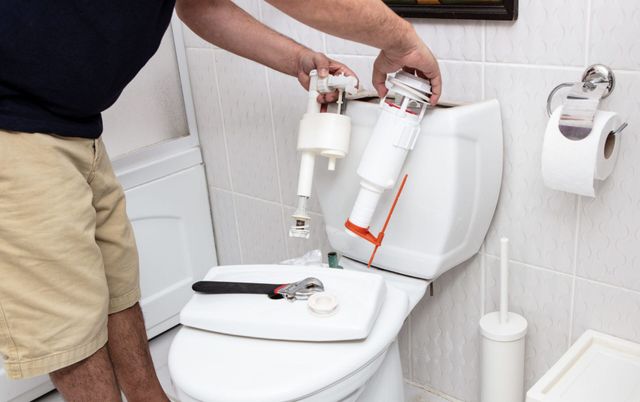Bathroom Plumbing Essentials: What Every New Homeowner Needs to Know
Bathroom Plumbing Essentials: What Every New Homeowner Needs to Know
Blog Article
The content on the next paragraphs on the subject of General Plumbing Tips for New Homeowners is relatively stimulating. Try it and make your own findings.

For new property owners, understanding and preserving washroom pipes can conserve both time and money by stopping pricey concerns down the line. Right here are some important washroom plumbing tips to assist you maintain whatever running efficiently.
Familiarize Yourself with the Key Shut-Off Valve
Recognizing where the main water shut-off valve is located in your home is important. This enables you to swiftly shut off the water in case of major leakages or throughout plumbing emergencies, avoiding comprehensive water damage.
Frequently Examine for Leaks
Little leakages can result in huge troubles. Consistently examine under sinks, around bathrooms, and near pipes components for any signs of leaks. Seek wetness, little drips, or corrosion. Capturing and repairing leaks early can protect against a lot more severe damage and save water.
Don't Overlook Slow Drains Pipes
If your sink or bathtub is draining gradually, it's commonly an indicator of a blockage developing. Resolving this very early can stop a total obstruction. Use a bettor or a plumber's serpent to clean out debris. Prevent making use of chemical drainpipe cleaners as they can harm your pipes over time.
Know What Not to Flush
Commodes are not waste disposal unit. Stay clear of purging anything besides toilet paper and human waste. Items like wipes, feminine hygiene items, and cotton swabs should be gotten rid of in the trash to stop clogs and sewage system backups.
Install Strainers in Drains
Place filters in your sink and tub drains to capture hair and other particles prior to they enter your pipes system. Cleaning the filters frequently will help avoid buildup and maintain water streaming openly.
Preserve Your Hot Water Heater
Ensure your hot water heater is readied to a suitable temperature (typically about 120 degrees Fahrenheit) to stop scalding and minimize energy usage. Flush the container annually to eliminate sediment build-up, which can reduce the effectiveness and life-span of your heater.
Upgrade Your Components
If your home has older components, take into consideration updating to much more effective versions. Modern toilets, showerheads, and faucets are created to make use of less water while supplying good pressure, which can dramatically decrease your water expense and ecological impact.
Be Cautious with DIY Pipes Services
While it's tempting to deal with all home repair work on your own, beware with plumbing. Some problems may call for professional experience, especially if they include primary water lines or sewage system fixings. Hiring an expert can often be extra affordable than DIY, particularly if it protects against more damages.
Prepare for Cold Weather
Safeguard your pipes from freezing during cold weather by protecting pipes in unheated areas like basements, attic rooms, and garages. During extreme cool, let cold water drip from faucets served by exposed pipes to aid protect against cold.
Set Up Normal Maintenance
Think about scheduling annual inspections with a licensed plumber. They can spot issues that you could miss out on, such as concealed leaks or deterioration on pipes and fixtures. Normal maintenance helps extend the life of your pipes system and can protect against emergency situations.
Final thought
Comprehending and preserving your home's washroom pipes can stop lots of common issues. By following these essential pointers, you can guarantee your shower room stays practical and effective, saving you money and time in the future.
Essential Plumbing Tips for Homeowners: Keep Your Pipes Flowing Smoothly
As a homeowner, understanding the basics of your plumbing system can save you time, money, and a lot of headaches. Plumbing issues can range from minor annoyances like dripping faucets to major problems like burst pipes that cause significant damage. This guide provides essential tips to help you maintain your plumbing system and tackle common issues.
Understanding Your Plumbing System
Supply System: Brings fresh water into your home from a municipal source or a well. Drain-Waste-Vent System: Removes wastewater and vents sewer gases outside. Fixtures and Appliances: Includes sinks, toilets, showers, dishwashers, and washing machines. Basic Maintenance Tips
Regular Inspections: Periodically check for leaks, corrosion, and other signs of wear and tear. Look under sinks, around toilets, and near water heaters. Know Your Main Shut-Off Valve: In case of a major leak, you’ll need to shut off the water quickly. Ensure everyone in your household knows where the main shut-off valve is located. Prevent Frozen Pipes: In cold climates, insulate exposed pipes and let faucets drip during extreme cold to prevent freezing. Use Strainers: Install strainers in sinks and tubs to catch hair, food particles, and other debris that can cause clogs. Common Plumbing Issues and Solutions
Clogged Drains:
Prevention: Avoid pouring grease down the drain and use drain screens to catch debris. DIY Fix: Use a plunger or a plumbing snake to clear minor clogs. For stubborn clogs, a mixture of baking soda and vinegar can sometimes help. Leaky Faucets:
Prevention: Replace washers and seals regularly. DIY Fix: Turn off the water supply, disassemble the faucet, and replace worn parts.

Details Here Report this page